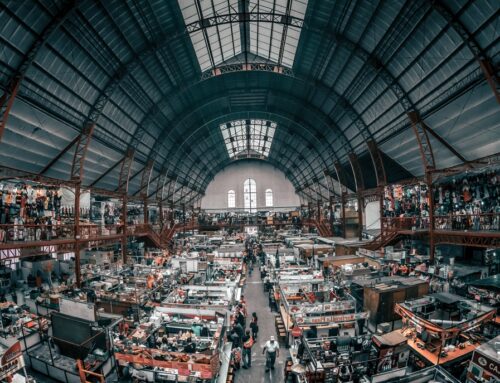During my career as a Master Mariner, Port Captain and now Marine Risk Engineer, I’ve seen how the remarkable evolution of the maritime shipping industry has contributed to making the world smaller and the global economy significantly larger.
I also recognize that most people outside the industry are generally unaware of how it supports global commerce. Most consumers, for instance, have only a limited understanding of the intricate supply chains that bring fresh fruits and vegetables to their local shops.
Not surprisingly, there is also little awareness of a new requirement that ships reduce their emissions of particulate material, which has been proven to have significant adverse health impacts for people worldwide. The health benefits of this new regulation are expected to be substantial, especially for children and the elderly, which is great news.
There are also some challenges along the way, however, for ship owners who may face new risks in complying with this directive.
Substantial benefits
Beginning on 1st January 2020, a new regulation approved by the International Maritime Organization (IMO) requires that virtually all ships limit their sulphur emissions to less than 0.50% m/m (mass by mass).
For many maritime operators, this regulation represents a substantial change; the current limit is 3.50% m/m in most parts of the world.
The rule is also expected to have substantial benefits, both directly and indirectly. In particular, it was enacted to lessen the health impacts caused by the particulates that are released into the atmosphere when the fuel is burned. According to a study cited by the IMO, not reducing the sulphur limit “… would contribute more than 570,000 additional premature deaths worldwide between 2020-2025.” Moreover, recent research conducted after the regulation was adopted concluded that the average life expectancy lost per person globally due to particulate pollution, including sulphur oxide, amounts to 1.8 years. To put that in context, the comparable figure for smoking is 1.6 years.
Among those affected by this new regulation: the massive container ships and roll-on/roll-off vessels operating between Asia and Europe and North America; bulk carriers transporting commodities from the Americas, Africa and Australia to markets around the world; oil tankers originating in the Middle East; and myriad other ferry operations, fishing vessels, tugboats, barges and so on.
Given the scope of this requirement, it’s also not surprising that it’s prompting increased attention and urgency around the broader challenges the shipping industry faces in transitioning to cleaner, more efficient vessels and propulsion systems.
Go low
Ship operators have three options for complying with the regulation: switch to low-sulphur fuels, install scrubbers, or convert the vessel, or their fleet, to burn liquefied natural gas (LNG).
All of the evidence to date indicates that the vast majority of ship owners will switch to low-sulphur fuels. The questions and potential issues with this approach include fuel availability, increased cost and greater operational risk.
Ever since the new sulphur emission limit was adopted in 2016, there has been a running debate within the industry as to whether there will be enough low-sulphur fuel to meet the increased demand. One study conducted by the IMO determined that supplies will be adequate. Another backed by BIMCO, the largest international shipping association representing shipowners, concluded that there could be shortages in some parts of the world, at least in the short-term.
The oil industry so far has been noncommittal. One major oil producer commented that it’s difficult to predict in advance what actual demand will be. This company also noted that if refiners miscalculate, “any response to a lack of demand will be slow” given the time it takes to revamp their operations.
Then there are the cost implications; low-sulphur fuels are more expensive. One energy research consultancy, for instance, estimates that the maritime industry’s fuel costs will increase by US$60 billion; that’s about as much as its overall fuel bill in 2016. Moreover, A.P. Moller-Maersk A/S, the world’s largest container shipping line, claims that its fuel costs will rise by US$2 billion; that’s almost 60% more than it paid in 2017. Maersk has also announced that it will start charging fuel costs separately in 2020.
These added costs could have substantial spillover effects on other parts of the transport and logistics sector and, in turn, the global economy. For instance, one prominent energy economist predicts that increased competition for lighter grades of fuel could lead to price rises of 50% for the diesel used in trucking and 20-30% for aviation fuel.
Finally, switching to low-sulphur fuel could increase the potential for engine damages from so-called cat fines. These have nothing to do with either felines or financial penalties. Instead, cat (short for catalyst) fines are small aluminium and silicon particles that are found in fuel oil as a by-product of the refining process.
According to Jonny Moss, an Assistant Underwriter with AXA XL’s Marine Hull & War team who is also an associate member of the Royal Institution of Naval Architects, the concern with cat fines is that ISO 8217 stipulates a maximum limit of 60ppm while most engine manufacturers recommend a much lower level, typically around 15ppm. When an engine burns fuels with higher concentrations, the cat fines can become embedded in the cylinder liners and piston rings as well as other components. And they can’t just be washed out; the engine needs to be stripped and damaged parts repaired or replaced. That’s a time consuming and expensive procedure.
Plans B and C
Most observers estimate that around one-two thousand of the 90 thousand vessels in operation worldwide will comply with the regulation by installing exhaust gas cleaning systems – aka scrubbers – to remove excess amounts of sulphur oxide.
The companies going this route, including the world’s 2nd largest container fleet, base their decisions on what they perceive as the favourable economics of scrubbers. In this view, the cost to retrofit a vessel with scrubbers is more than offset by the ability to continue burning lower cost heavy fuel oil. In fact, at a recent meeting of the Singapore Shipping Association, industry representatives said they expected the payback period for scrubbers to amount to about one year.
The economics notwithstanding, this option also is not without challenges and uncertainties. In particular, any time a new, complex system is introduced on a ship, the crew needs training on how to monitor, maintain and repair the equipment. I have yet to see any training modules covering scrubbers, and so far there are no training requirements or certifications for crew members working on a vessel with scrubbers.
The last option, switching to a propulsion system that burns LNG or other alternative fuels like liquid petroleum gas, methanol or hydrogen, represents the direction the maritime industry is headed. The question is how soon.
Switching to LNG or other alternatives would sharply reduce the industry’s CO2 emissions. Maritime shipping currently produces about 2% of global CO2 emissions, and that proportion could rise to as much as 20% by 2050 if the industry continues to rely on fossil fuels.
While LNG is a good option environmentally, the infrastructure for supplying it is still undeveloped. The propulsion systems also are comparatively expensive and complicated, although the costs are expected to come down over time.
Given these factors, relatively few existing ships will be converted to run on LNG or other alternative fuels. Instead, these propulsion systems are projected to feature more prominently in orders for new ships. Also, the transition of the global fleet to cleaner fuels should start to accelerate as the LNG supply infrastructure develops further.
What now?
Although the scope of this directive seems quite modest – reduce sulphur oxide emissions from ships – the industry has never faced a new regulation with such sweeping impacts and implications. The closest analogy is the requirement enacted following the Exxon Valdez disaster that oil tankers be built with a double hull. That was a costly and time-consuming undertaking. It also applied to only one category of ship; the significantly lower limits on sulphur emissions apply to all vessels.
With less than one year before the effective date, there are, as noted, still many questions and uncertainties about how this new requirement will affect shipping and global trade. And regardless of the approach ship owners follow to comply with the rule, the consensus view is that transport costs will reverse a now decades-long trend and begin to rise, perhaps sharply.
As the economics change, will that, in turn, spur more significant innovation in the maritime industry along with even more emphasis on improving operational efficiencies? Will increased transport costs also lead some companies or industry sectors to re-think their operating models and global supply chains? And what about consumers who suddenly discover that the latest model of athletic shoe is now a bit more expensive?
Time will tell of course. Nonetheless, although this seemingly small change in one industry sector could send ripples across the global economy, people around the world also will be breathing easier, and living more healthy and productive lives, once this directive goes into effect.




